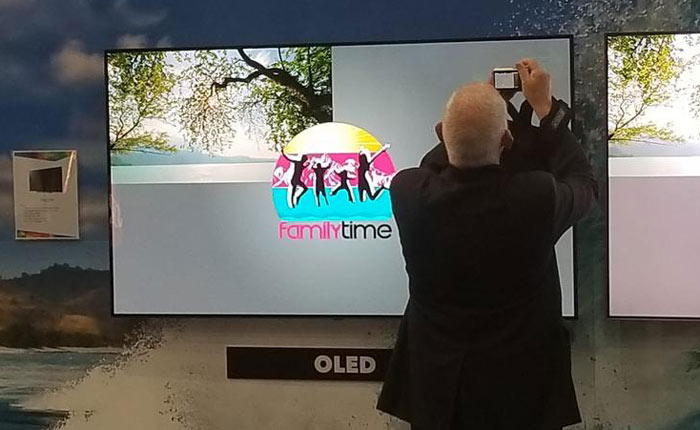OLED displays are desirable thanks to their deep blacks, excellent contrast, and the enabling of extremely thin and light and even flexible designs. However there are several known drawbacks too; production yields impact on cost, blue pixel life is said to be shorter, and there seems to be a greater potential for burn-in issues. It is that last issue that has been highlighted in recent months by reports of screen issues from owners of the Google Pixel 2 phones, and much more recently by observations of an LG OLED 65-inch TV on show at the SID Display Week 2018 in Los Angeles.

ZDNet's Cho Mu-Hyun reports that quantum dot developer Nanosys was showing off an LG OLED TV and a Samsung Electronics QLED TV at its booth at SID 2018. Nanosys has reportedly bought the LG OLED TV (a 2017 revision) from a store only two of three weeks ahead of SID 2018. At the three day show signs of burn-in were seen on the first day "according to multiple eye witnesses".
The TV was only turned on for 8 hours a day, coinciding with the opening and closing of the show. Ahead of the show the TV had been used for 50 or 60 hours it is reported - but we don't know what was on screen during that period.

You can clearly see above that the 'family time' logo is burned into the display. This logo is part of the video image quality demo loop run by Nanosys at its booth.
Apparently, LG representatives at SID 2018 visited the Nanosys booth multiple times during the show, after hearing about the display issue. In reaction to previous consumer reports, LG has asserted that burn-in should not affect picture quality during 10 years of an average TV which is on for 8 hours a day (~30,000 hours). However, LG has previously admitted a factory problem affected some panels were more prone to burn-in than others.
Just a couple of months ago LG monitors at South Korea's Incheon International Airport suffered from noticeable signs of burn-in after three months of deployment and were subsequently replaced with LCD models for viewing clarity.













